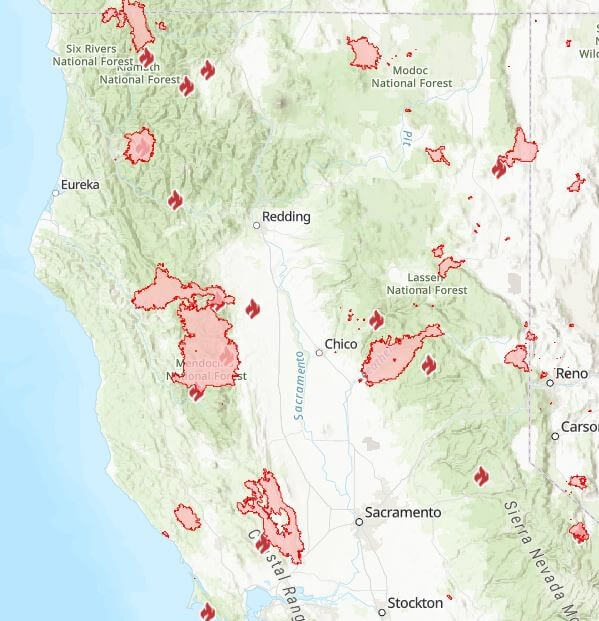By Adam Robin
As California enters the traditional late summer beginning of wildfire season, the state is already grappling with a wildfire emergency of unprecedented scale. As of mid-September, more than 3.2 million acres—over 5,000 square miles—have already burned statewide. Smoke from these fires has smothered the entire state, with many major urban centers experiencing their worst air quality on record.

CalFire Map – Active Incidents as of 9/15/2020
The staggering start to the 2020 wildfire season adds to the heavy toll imposed by fires in recent years. The increasing scale, frequency and intensity of wildfire has had tragic impacts on communities and imposed substantial costs on all Californians. 85 Californians were killed in the 2018 Camp Fire and wildfires have already claimed 35 lives in 2020. The direct costs of firefighting and emergency response are hundreds of millions of dollars annually. Water agencies and local governments have also incurred significant costs due to lost and damaged water and energy infrastructure, as well as new ongoing costs necessary to manage environmental impacts through debris removal, sediment control, and other management actions.
Across the Sacramento River Basin, water managers have extensive experience managing extreme events of drought, flood, and fire. Actions to promote healthy forests and headwaters can reduce impacts from catastrophic wildfires as well as increase water supply reliability, improve water quality, increase renewable energy supplies, and enhance habitat for fish and wildlife. Examples of these management approaches include the Placer County Water Agency’s French Meadows Forest Restoration Program in the American River watershed and the Yuba Water Agency’s pioneering efforts in forest protection and watershed restoration, including financing these activities through Forest Resilience Bonds.
The forests and meadows of the Sierra Nevada, Coast Range and Cascade Mountains are the source waters for the Sacramento River Basin and much of California. Healthy headwaters ensure increased water supply reliability, improved water quality, reduced impacts from catastrophic wildfires, increased renewable energy supplies, enhanced habitat and improved response to climate change and extreme conditions.
This year’s fires have raised a new awareness among Californians and underscored the need for additional efforts to mitigate and manage the risks of wildfire through their massive scale, devastating impacts on burned communities and ecosystems, and the significant, widely distributed effects of wildfire smoke on air quality in urban population centers statewide.
As California shifts its focus from today’s immediate emergency response needs to longer-term efforts to enhance and expand the active management our forested headwaters, the actions taken by Sacramento River Basin water managers, their partners, and many others provide innovative, collaborative, and scalable models to improve the health of our headwaters and reduce wildfire risk.
Additional Reading:
- PPIC, The Benefits of Headwater Forest Management (April 2020)
- ACWA, Recommended Actions for California’s Headwaters (February 2020)
- CA Economic Summit, California’s Wildfire Crisis: A Call to Action (October 2019)
- NCWA Blog, Public Land Management at a Crossroad, by Andy Fecko, PCWA (July 2015)
We welcome your thoughts and feedback regarding this issue. For more information, please contact Adam Robin at arobin@norcalwater.org.



